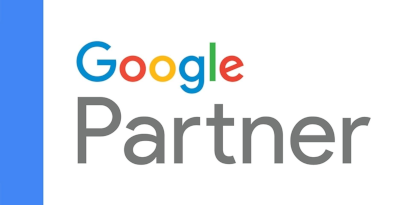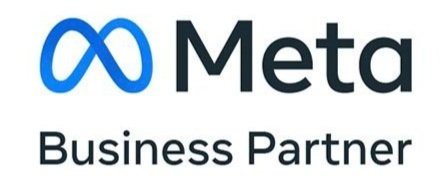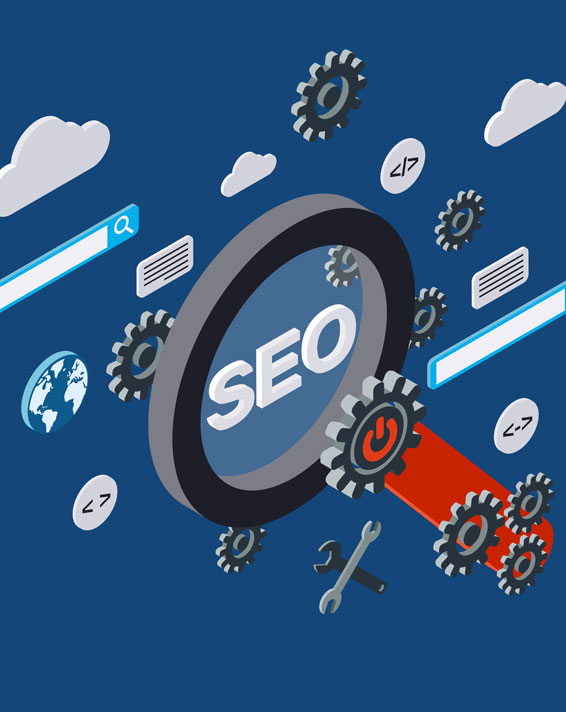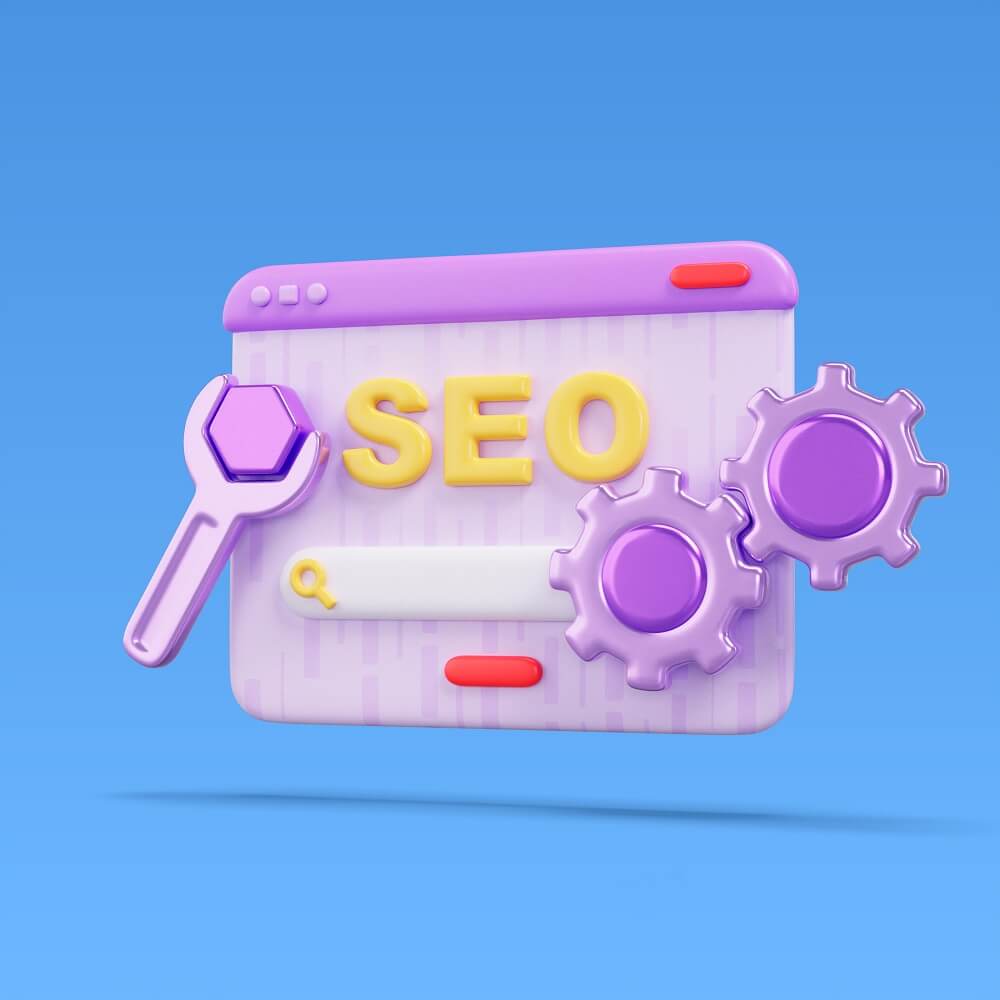Optimize your website’s structure with technical SEO that improves loading times, mobile-friendliness, and crawlability. Utah Digital Marketing Experts resolves technical issues that impact rankings, ensuring smooth experiences for users and search engines. Build a solid foundation for success.








In addition to being just an aesthetic asset, a well-optimized website must function effectively so that search engines can quickly crawl, index, and rank your material. At Utah Digital Marketing Experts, we specialize in Technical SEO services that enhance the technical aspects of your site, improving its performance and visibility across search engines. Our team of experts focuses on optimizing your website’s infrastructure, making sure it is both search engine-friendly and user-friendly.
Technical SEO involves a deep dive into the elements of your website that directly affect search engine ranking, such as site speed, mobile usability, crawlability, and security. These factors are often overlooked but play a major role in ensuring that your website stands out online. Through a combination of advanced tools, analysis, and proven techniques, we address the critical components of your site that can improve both search engine visibility and the overall user experience.
Understanding the unique dynamics of Utah and local search behavior is crucial for getting the most out of your SEO efforts. Our approach focuses on optimizing key technical elements, including fixing crawl errors, improving internal linking, implementing XML sitemaps, and ensuring that your site is fully secure with HTTPS. These actions not only help your site rank higher but also ensure it runs smoothly, keeping users engaged and reducing bounce rates.
We take the time to analyze your website’s structure thoroughly, identifying areas that need improvement and making data-driven recommendations. Our goal is to ensure that your website loads quickly, is mobile-responsive, and offers a seamless navigation experience. As a result, your site will not only perform better in search rankings but will also keep visitors coming back. With our Technical SEO services, you can trust that your website is positioned for success, with a solid foundation that supports long-term growth and increased visibility.


Technical SEO is the practice of optimizing the technical aspects of your website to improve its visibility and performance on search engines. Unlike content-focused strategies, technical SEO targets the elements of your site that enable search engines to crawl, index, and rank your pages effectively. These optimizations work behind the scenes to ensure your website is structured in a way that search engines can easily interpret and users can navigate seamlessly.
Key elements of technical SEO include improving website speed, enhancing mobile usability, and ensuring secure connections with HTTPS. Additionally, technical SEO focuses on optimizing your site’s architecture, such as ensuring a clean, organized URL structure, creating and submitting an XML sitemap, and fixing any crawl errors. These changes make it easier for search engines to access, index, and rank your content, resulting in better search engine performance.
One of the primary goals of technical SEO is to improve the user experience by making sure your website loads quickly, is mobile-friendly, and is free from technical issues like broken links or duplicate content. Search engines prioritize websites that provide a seamless experience for users, so optimizing these technical aspects can significantly impact your rankings and engagement.
Technical SEO also ensures that your site is fully optimized for modern search engines by addressing issues related to website security, structured data, and internal linking. These improvements make it easier for search engines to understand the context of your content and provide more relevant results to users.
Since search engines constantly update their algorithms and technology, ongoing technical optimization is crucial for maintaining and improving your website’s performance. By addressing the technical aspects of your site, you create a solid foundation that supports long-term growth and visibility in search results.

Proper crawlability and indexability are essential for ensuring that search engines can discover, access, and rank your website’s pages. Without this, your content won’t appear in search results, limiting your visibility.
These technical SEO actions ensure your website is fully crawlable and indexable by search engines. By addressing crawl errors, optimizing your robots.txt file, refining your XML sitemap, and fixing broken links with proper redirects, we help search engines efficiently discover and rank your content. These optimizations improve visibility, boost rankings, and drive more organic traffic to your site.
With Google’s mobile-first indexing, the mobile experience of your website plays a crucial role in determining its search engine rankings. A website optimized for mobile devices not only improves visibility but also ensures a positive user experience. We focus on key aspects of mobile optimization:
By focusing on these elements, we ensure your site not only meets the standards of mobile-first indexing but also delivers an exceptional mobile experience that keeps users engaged and supports higher search engine rankings.
Page speed is a key factor in both user satisfaction and search engine rankings. A fast-loading website enhances the user experience, reduces bounce rates, and improves conversion rates. To optimize your site’s speed, we implement the following strategies:
Addressing these areas ensures your website achieves optimal speed, delivering a seamless browsing experience that enhances user engagement and strengthens your site’s SEO performance.
Website security is a critical factor for both user trust and search engine rankings. Transitioning from HTTP to HTTPS not only signals to search engines that your site is secure but also provides users with a safer browsing experience. Our process ensures:
Implementing HTTPS enhances your website’s security, fosters user confidence, and contributes to better search engine rankings.
Structured data, powered by Schema.org markup, plays a crucial role in helping search engines understand your content and display it more effectively in search results. Adding this advanced markup to your website enables the creation of rich and informative results, improving visibility and engagement. Our approach focuses on:
Leveraging structured data and schema markup makes your website more informative and engaging, providing search engines and users with a clearer understanding of your content. This approach drives measurable improvements in traffic, click-through rates, and user engagement.
Duplicate content can dilute search engine rankings and confuse both users and search engines. Addressing these issues is essential for maintaining a clear and authoritative website structure. Our strategies focus on:
Optimizing for canonicalization and resolving duplicate content issues ensures that search engines can accurately interpret your website’s structure and prioritize the most relevant pages. This process enhances the clarity of your content, maintains consistency across your site, and strengthens your overall SEO performance, leading to improved rankings and a better user experience.
Google’s Core Web Vitals are essential metrics that evaluate the quality of user experience on your website. These metrics focus on key aspects of site performance, ensuring visitors have a fast, interactive, and visually stable experience. Our optimization strategies include:
Focusing on Core Web Vitals optimization ensures your website meets Google’s standards for performance and provides a superior experience for users, resulting in better rankings and higher satisfaction.
Crawl errors and server issues can prevent search engines from properly indexing your website, limiting its visibility. Our approach ensures that these technical obstacles are swiftly identified and resolved, improving both search engine performance and user experience. We focus on:
Fixing crawl errors and optimizing server performance contributes to smoother search engine crawling, better rankings, and a seamless user experience.
Improper redirects can cause confusion for both search engines and users, potentially harming your website’s SEO. Our advanced redirect strategies ensure that redirects are implemented correctly, improving site performance and maintaining link authority. We focus on:
Advanced redirect strategies help maintain SEO performance, improve page load speeds, and provide a seamless experience for both users and search engines.
A clean and logical URL structure enhances both search engine crawling and user navigation. It makes your website more accessible, improving its overall SEO performance. We focus on optimizing URL structure through:
Optimizing your website’s URL structure results in a more organized site that improves user experience, makes content easier to find, and enhances SEO.
Proper crawlability and indexability are essential for ensuring that search engines can discover, access, and rank your website’s pages. Without this, your content won’t appear in search results, limiting your visibility.
These technical SEO actions ensure your website is fully crawlable and indexable by search engines. By addressing crawl errors, optimizing your robots.txt file, refining your XML sitemap, and fixing broken links with proper redirects, we help search engines efficiently discover and rank your content. These optimizations improve visibility, boost rankings, and drive more organic traffic to your site.
Page speed is a key factor in both user satisfaction and search engine rankings. A fast-loading website enhances the user experience, reduces bounce rates, and improves conversion rates. To optimize your site’s speed, we implement the following strategies:
Addressing these areas ensures your website achieves optimal speed, delivering a seamless browsing experience that enhances user engagement and strengthens your site’s SEO performance.
Structured data, powered by Schema.org markup, plays a crucial role in helping search engines understand your content and display it more effectively in search results. Adding this advanced markup to your website enables the creation of rich and informative results, improving visibility and engagement. Our approach focuses on:
Leveraging structured data and schema markup makes your website more informative and engaging, providing search engines and users with a clearer understanding of your content. This approach drives measurable improvements in traffic, click-through rates, and user engagement.
Google’s Core Web Vitals are essential metrics that evaluate the quality of user experience on your website. These metrics focus on key aspects of site performance, ensuring visitors have a fast, interactive, and visually stable experience. Our optimization strategies include:
Focusing on Core Web Vitals optimization ensures your website meets Google’s standards for performance and provides a superior experience for users, resulting in better rankings and higher satisfaction.
Improper redirects can cause confusion for both search engines and users, potentially harming your website’s SEO. Our advanced redirect strategies ensure that redirects are implemented correctly, improving site performance and maintaining link authority. We focus on:
Advanced redirect strategies help maintain SEO performance, improve page load speeds, and provide a seamless experience for both users and search engines.
Website security is a critical factor for both user trust and search engine rankings. Transitioning from HTTP to HTTPS not only signals to search engines that your site is secure but also provides users with a safer browsing experience. Our process ensures:
Implementing HTTPS enhances your website’s security, fosters user confidence, and contributes to better search engine rankings.
Duplicate content can dilute search engine rankings and confuse both users and search engines. Addressing these issues is essential for maintaining a clear and authoritative website structure. Our strategies focus on:
Optimizing for canonicalization and resolving duplicate content issues ensures that search engines can accurately interpret your website’s structure and prioritize the most relevant pages. This process enhances the clarity of your content, maintains consistency across your site, and strengthens your overall SEO performance, leading to improved rankings and a better user experience.
Crawl errors and server issues can prevent search engines from properly indexing your website, limiting its visibility. Our approach ensures that these technical obstacles are swiftly identified and resolved, improving both search engine performance and user experience. We focus on:
Fixing crawl errors and optimizing server performance contributes to smoother search engine crawling, better rankings, and a seamless user experience.
A clean and logical URL structure enhances both search engine crawling and user navigation. It makes your website more accessible, improving its overall SEO performance. We focus on optimizing URL structure through:
Optimizing your website’s URL structure results in a more organized site that improves user experience, makes content easier to find, and enhances SEO.

E-commerce websites have specific technical needs to ensure products are discoverable and user experiences are smooth. Our services focus on optimizing large inventories, improving site performance, and ensuring search engines can crawl your pages effectively.
Our specialized technical SEO services for e-commerce websites help optimize product pages, implement structured data, improve page speed, and resolve duplicate content issues. These strategies boost search rankings, enhance user experience, and increase sales opportunities for e-commerce businesses.
Local businesses depend on geo-targeted visibility to attract nearby customers and drive foot traffic. A robust technical SEO strategy ensures your business stands out in local searches and connects with the right audience. Our comprehensive approach includes:
These technical SEO strategies ensure your business is optimized for local searches, making it easier for customers to find you while enhancing your credibility and online presence. This approach leads to increased foot traffic, higher engagement, and sustained local growth.
Corporate websites with extensive content and complex structures require tailored technical SEO strategies. We specialize in optimizing large-scale sites to ensure better performance, security, and global reach.
Our technical SEO services for corporate websites focus on optimizing site structures, enhancing security, improving server performance, and ensuring global reach. These strategies help large businesses improve their search rankings, engage users, and maintain a strong online presence across multiple regions and languages.
Startups require a solid technical SEO foundation to gain online visibility, attract their target audience, and set the stage for growth. Our refined approach includes five key areas designed to address the unique needs of startups:
Implementing these essential technical SEO strategies enables startups to establish a strong digital foundation. Optimizing for search engine visibility, user experience, and scalability from the start helps attract the right audience and supports sustainable growth. These efforts ensure your website can handle increased traffic as your business grows while maintaining a seamless user experience and strong performance. Early focus on technical SEO sets startups up for long-term success and continuous growth in a competitive online environment.
Content-heavy websites often face challenges like indexing, crawlability, and content organization. Our technical SEO strategies focus on improving these areas, ensuring your content is easily accessible to both search engines and users.
These technical SEO strategies help optimize your content-heavy website for both search engines and users. By implementing proper canonical tags, schema markup, efficient category structures, optimized media, and improved crawlability, we ensure your website ranks well and offers an excellent user experience. These efforts set the stage for long-term SEO success and growth.
In the healthcare sector, technical SEO ensures compliance, security, and an optimal user experience. Our services are designed to improve search visibility and usability for healthcare providers.
Our technical SEO services for healthcare websites focus on security, local visibility, and mobile optimization. These strategies ensure compliance, improve search rankings, and create a seamless experience for patients, helping healthcare providers attract and retain more visitors.
Real estate websites rely on detailed optimization for location-based searches to attract potential buyers and sellers. We provide specialized technical SEO services to ensure your website ranks effectively and performs well.
These technical SEO strategies are designed to optimize real estate websites for both search engines and users. By improving indexing, leveraging schema markup, optimizing site speed, and enhancing search filter functionality, we help real estate websites perform better in local and property-specific searches, attracting more qualified leads.
Educational websites serve a diverse audience, from students and faculty to parents and staff. We provide specialized technical SEO services to ensure your website is user-friendly, compliant, and optimized for search engines.
Our technical SEO services for education websites focus on improving site structure, user navigation, accessibility, and performance. These strategies ensure that your website meets the needs of all audiences while enhancing search engine visibility and user experience.
For law firms, establishing trust and visibility online is essential. We specialize in technical SEO strategies that enhance security, usability, and search engine performance for legal websites.
Our technical SEO services for law firms focus on ensuring security, improving site navigation, and optimizing for search engines. These strategies enhance your website’s visibility, user experience, and engagement, helping you attract more clients while maintaining a trusted online presence.
Nonprofit websites require optimized technical solutions to improve user engagement, streamline donation processes, and build trust with potential donors. Our services focus on enhancing site performance, visibility, and user experience.
Our technical SEO services for nonprofit websites focus on improving mobile usability, implementing event schema, optimizing page speed, and enhancing security. These strategies help increase donor trust, improve user experience, and drive greater engagement and conversions for your nonprofit organization.
News and media websites demand quick updates, fast performance, and accurate indexing to maintain real-time visibility. We provide technical SEO solutions that optimize these elements for better user engagement and search engine rankings.
Our technical SEO services for news and media websites focus on AMP implementation, structured data setup, proper indexing of archived content, and improving server response times. These strategies help maintain high performance, improve visibility, and ensure real-time access to your content, keeping your audience engaged and informed.
E-commerce websites have specific technical needs to ensure products are discoverable and user experiences are smooth. Our services focus on optimizing large inventories, improving site performance, and ensuring search engines can crawl your pages effectively.
Our specialized technical SEO services for e-commerce websites help optimize product pages, implement structured data, improve page speed, and resolve duplicate content issues. These strategies boost search rankings, enhance user experience, and increase sales opportunities for e-commerce businesses.
Content-heavy websites often face challenges like indexing, crawlability, and content organization. Our technical SEO strategies focus on improving these areas, ensuring your content is easily accessible to both search engines and users.
These technical SEO strategies help optimize your content-heavy website for both search engines and users. By implementing proper canonical tags, schema markup, efficient category structures, optimized media, and improved crawlability, we ensure your website ranks well and offers an excellent user experience. These efforts set the stage for long-term SEO success and growth.
Real estate websites rely on detailed optimization for location-based searches to attract potential buyers and sellers. We provide specialized technical SEO services to ensure your website ranks effectively and performs well.
These technical SEO strategies are designed to optimize real estate websites for both search engines and users. By improving indexing, leveraging schema markup, optimizing site speed, and enhancing search filter functionality, we help real estate websites perform better in local and property-specific searches, attracting more qualified leads.
Educational websites serve a diverse audience, from students and faculty to parents and staff. We provide specialized technical SEO services to ensure your website is user-friendly, compliant, and optimized for search engines.
Our technical SEO services for education websites focus on improving site structure, user navigation, accessibility, and performance. These strategies ensure that your website meets the needs of all audiences while enhancing search engine visibility and user experience.
News and media websites demand quick updates, fast performance, and accurate indexing to maintain real-time visibility. We provide technical SEO solutions that optimize these elements for better user engagement and search engine rankings.
Our technical SEO services for news and media websites focus on AMP implementation, structured data setup, proper indexing of archived content, and improving server response times. These strategies help maintain high performance, improve visibility, and ensure real-time access to your content, keeping your audience engaged and informed.
Local businesses depend on geo-targeted visibility to attract nearby customers and drive foot traffic. A robust technical SEO strategy ensures your business stands out in local searches and connects with the right audience. Our comprehensive approach includes:
These technical SEO strategies ensure your business is optimized for local searches, making it easier for customers to find you while enhancing your credibility and online presence. This approach leads to increased foot traffic, higher engagement, and sustained local growth.
Startups require a solid technical SEO foundation to gain online visibility, attract their target audience, and set the stage for growth. Our refined approach includes five key areas designed to address the unique needs of startups:
Implementing these essential technical SEO strategies enables startups to establish a strong digital foundation. Optimizing for search engine visibility, user experience, and scalability from the start helps attract the right audience and supports sustainable growth. These efforts ensure your website can handle increased traffic as your business grows while maintaining a seamless user experience and strong performance. Early focus on technical SEO sets startups up for long-term success and continuous growth in a competitive online environment.
In the healthcare sector, technical SEO ensures compliance, security, and an optimal user experience. Our services are designed to improve search visibility and usability for healthcare providers.
Our technical SEO services for healthcare websites focus on security, local visibility, and mobile optimization. These strategies ensure compliance, improve search rankings, and create a seamless experience for patients, helping healthcare providers attract and retain more visitors.
For law firms, establishing trust and visibility online is essential. We specialize in technical SEO strategies that enhance security, usability, and search engine performance for legal websites.
Our technical SEO services for law firms focus on ensuring security, improving site navigation, and optimizing for search engines. These strategies enhance your website’s visibility, user experience, and engagement, helping you attract more clients while maintaining a trusted online presence.
Nonprofit websites require optimized technical solutions to improve user engagement, streamline donation processes, and build trust with potential donors. Our services focus on enhancing site performance, visibility, and user experience.
Our technical SEO services for nonprofit websites focus on improving mobile usability, implementing event schema, optimizing page speed, and enhancing security. These strategies help increase donor trust, improve user experience, and drive greater engagement and conversions for your nonprofit organization.
Experienced Team: Our team is composed of seasoned technical SEO specialists who are dedicated to staying ahead of the curve. We constantly monitor the latest search engine algorithm updates, ensuring that we use the most effective strategies to maximize your site’s search engine performance. With years of hands-on experience, we understand the nuances of technical SEO and how to navigate changes in the digital landscape to keep your website optimized.
Customized Strategies: At our core, we believe every business is unique. That’s why we don’t apply generic solutions. Instead, we craft customized technical SEO strategies tailored specifically to your business goals, target audience, and industry. Whether you’re an e-commerce store, a local business, or a corporate website, we ensure that our approach aligns with your objectives and drives real, sustainable results.
Proven Results: We don’t just promise results; we deliver them. Our strategies are backed by data-driven insights, and we provide transparent reports so you can track the progress of your website’s SEO performance. From increased organic traffic to improved search engine rankings, we continuously refine and optimize your site to achieve long-term success. Our proven track record speaks for itself—our clients see tangible improvements in visibility, engagement, and conversions.
Affordable Services: We understand that budgets can vary, which is why we offer affordable technical SEO services that provide exceptional value. Our pricing is transparent and tailored to your business needs, ensuring you get the best ROI without unnecessary costs. We believe that every business, no matter its size, should have access to top-tier SEO services without breaking the bank.
When you choose us for your technical SEO needs, you benefit from a team of experienced professionals who are dedicated to achieving measurable, long-term results. With customized strategies, proven success, and cost-effective solutions, we are committed to helping your website perform at its best and drive meaningful growth.


Is your website optimized for search engine visibility and optimal performance? This is where the journey to improved search engine results, quicker load times, and smooth user experiences start. We will use our technical SEO skills to improve the structure, performance, and general functionality of your website so that search engines can efficiently scan and index your material, increasing traffic and conversions.
Make the next move to enhance your internet visibility. Get in touch with us for a free consultation during which we will assess your present technical SEO initiatives, learn about your objectives, and discuss how we can improve your website’s functionality. Our actionable solutions will help your website reach its maximum potential, whether that means fixing crawl difficulties, increasing site speed, or improving mobile usability. At Utah Digital Marketing Experts, our staff is committed to improving the technological underpinnings of your website in order to guarantee long-term success and steady expansion.
Don’t allow technical difficulties to impair the functionality of your website. Get in contact with us right now to find out how technical SEO can enhance the speed, visibility, and user engagement of your website. Together, we can maximize your website’s potential and produce quantifiable outcomes that spur expansion.